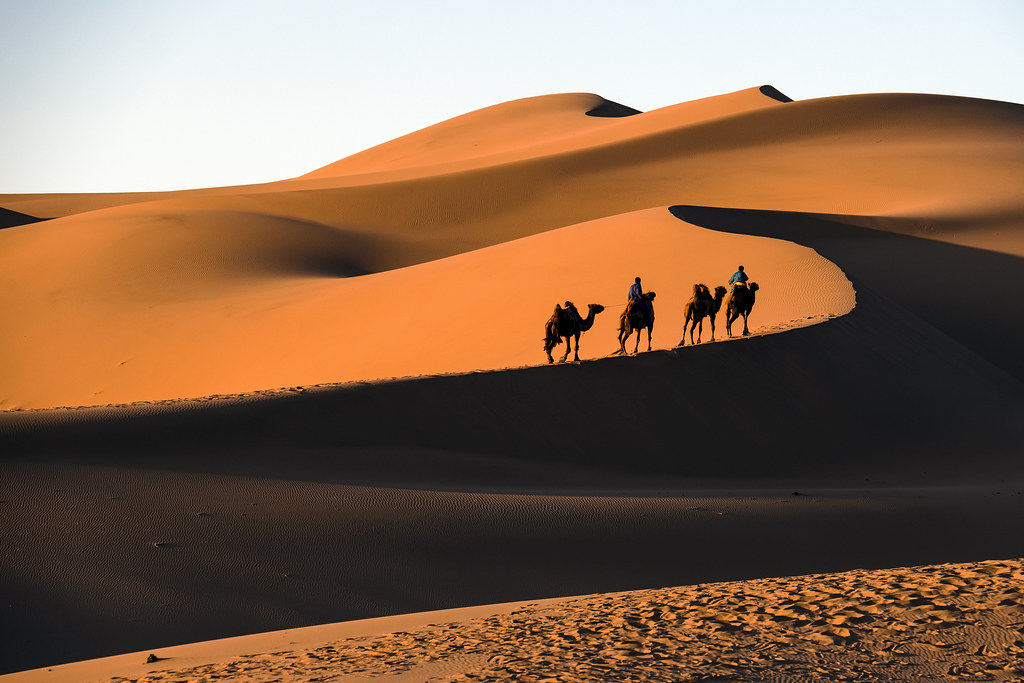In 1920’s, the American Museum of Natural History initiated a Central Asiatic Expedition in search for ancient human traces led by biologist Roy Chapman Andrew. Their initial plan was to find ancient human remains to prove human origins in central Asia. On the way back to their 3rd expedition, they stopped by the place named Bayanzag (which is alongside the Silk road or trading road).
And while they were discovering the area, they went to see some clay cliffs where they found many fossils of the dinosaurs. And in their further research, they found eggshells with the whole nest and one egg containing embryonic remains. So this was the first evidence found in the world that proved dinosaurs had laid eggs. That’s how Mongolian Gobi desert was introduced to the world for over 100 years. So every authentic traveler doesn’t miss this opportunity to feel the Gobi spirit and to see the outstanding wilderness. It’s a great gateway for everyone who is tired of the bustling sound of a big city and din of the traffic.

When we talk about desert, we tend to imagine a massive expansion of the sand. Mongolians consider that there are 33 different Gobi, where sandy desert covers only 5 percent of total territory made up of sand. The Mongolian Gobi is not a lifeless place at all. On the contrary, the most precious and endangered animals can be found only in Gobi. Millions of years ago, here the protoceratops used to graze as sheeps, Oviraptor philoceratops laid eggs and herbivorous and carnivorous dinosaurs fought each other. But now Gobi is home to camel breeders rich with unique flora and fauna. You will not spend much time seeing wild ass roaming freely in the wilderness, wild or domesticated camels scattered around, mountain sheep jumping over the rocky hills.

Yet there are some hidden treasures such as snow leopards, saiga and endangered Gobi bears, almost extinct in the wild so and so. Seeing the millions of twinkling stars in the open night sky and watching mesmerizing moments of sunrise right from the ground or up on the sand dunes would be the unforgettable moment of your life.
source: mongoliatravel.guide

